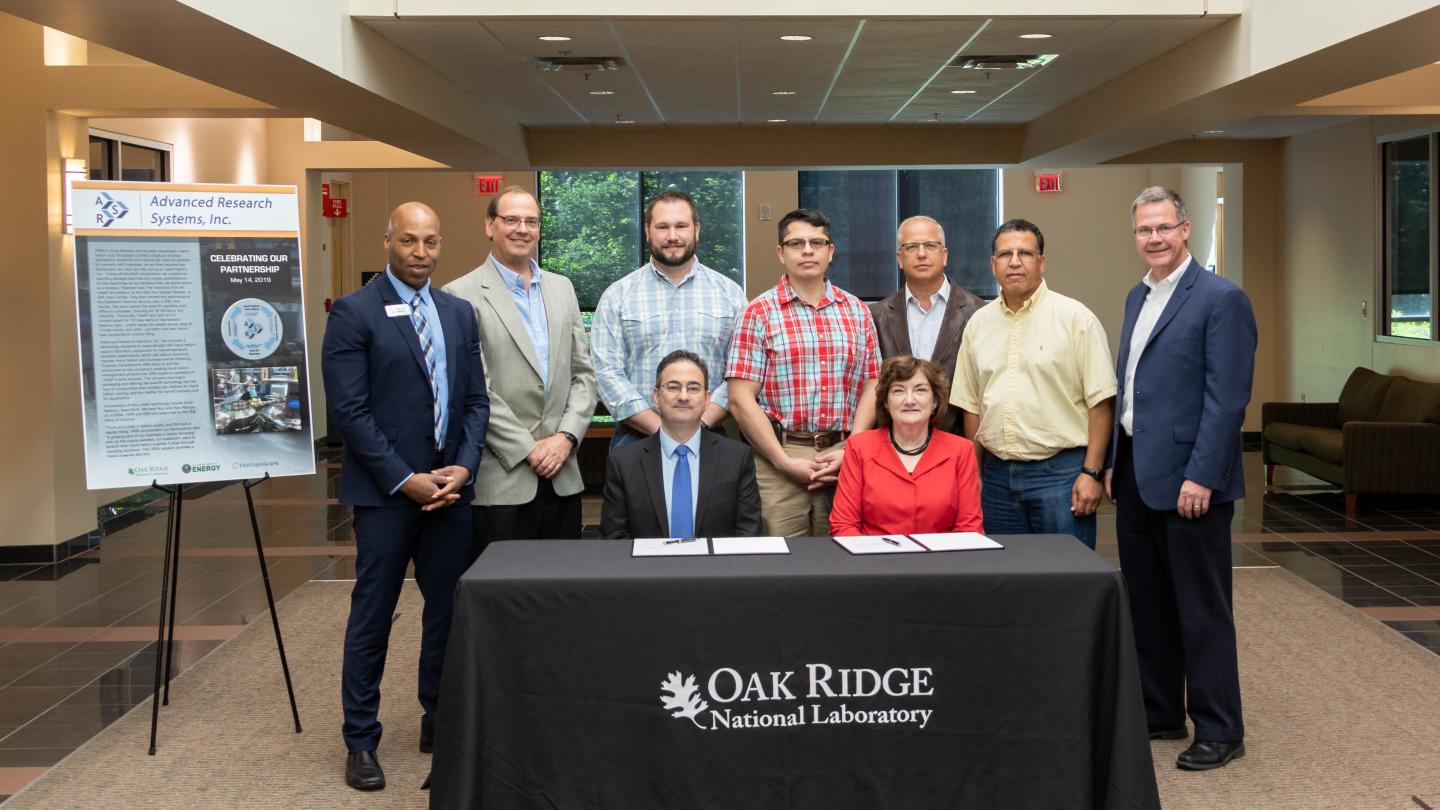
Credit: Carlos Jones/Oak Ridge National Laboratory, US Dept. of Energy
OAK RIDGE, Tenn., May 14, 2019–Advanced Research Systems, Inc., has licensed a technology designed to automatically refill liquid helium used in laboratory equipment for low-temperature scientific experiments, which will reduce downtime, recover more helium and increase overall efficiency.
Cryostat manufacturer ARS plans to add the component known as LHeAF, for liquid helium auto fill, to the company’s existing liquid helium management product line. Developed by the Department of Energy’s Oak Ridge National Laboratory, LHeAF allows for weeks versus days of uninterrupted, and safer, operation and less helium loss compared to manual filling.
“There is a crisis in helium supply, and the cost is rapidly rising,” ARS co-president Lou Santodonato said. “A growing part of our business is helium recycling.”
“And, as the supply dwindles, our customers want to stretch their liquid helium supplies further through recycling solutions,” he added.
ARS customizes their flagship products for helium cooling, recovery and liquefaction–helium gas-to-liquid conversion–to suit laboratories at universities, industry and other research facilities with varying equipment needs. Adding LHeAF to the mix creates a loop in ARS’s offering to include automatic filling.
At standard pressure, the noble gas helium turns to liquid at minus 270 degrees Celsius. The super coolant is needed in labs that use cryostat devices to hold samples exposed to extreme cold during highly sensitive scientific experiments.
Quantum materials, fundamental particle physics, magnetism and other cryogenic-related studies use liquid helium and cryostats as standard tools for research. At ORNL, efficient time and equipment management are critical to ensure scientists can run their experiments well.
ORNL’s Chris Redmon and his team developed LHeAF initially to shorten operational downtime and reduce the need for workers to manually refill cryostats, an act that required two technicians one hour per day during an experiment’s run.
“Using off-the-shelf components, we created an auto-fill prototype that met the unique specifications for the beamlines at our facilities that use liquid helium as a coolant,” Redmon said. The inventors first ran LHeAF simulations at the High Flux Isotope Reactor, a DOE User Facility. They then refined the technology at the Spallation Neutron Source, also a DOE User Facility. Both facilities are located at ORNL.
The team tested the auto-fill capability with different cryostats, checking for fill efficiency and reliability. “Eventually, LHeAF was able to run uninterrupted for 10 days without intervention,” Redmon said. “Since most experiments at the HFIR and SNS last three to six days, that’s a significant time and cost savings for scientists, facilities and the lab.”
ARS hopes to capitalize on LHeAF’s early success. The company has begun packaging and refining the auto-fill technology into the loop of components that includes the Helitran for liquid helium cooling; and the Helifier for boil-off recovery and for liquefaction.
Santodonato said the company has begun discussing the helium recovery solution to potential early adopters.
Co-inventors of the LHeAF technology include Chris Redmon, Saad Elorfi, Mariano Ruiz and Ryan Morgan, all of ORNL. HFIR and SNS are supported by the DOE Office of Science.
###
Advanced Research Systems, Inc., began in 1986 by CEO and founder Ravi Bains to provide cryogenic solutions for low-temperature research. Michael Holmes and Lou Santodonato are co-presidents of ARS.
Based in Macungie, Pennsylvania, ARS has evolved as a world-class manufacturer of closed cycle cryocoolers and laboratory cryogenic systems. ARS is the only major supplier of laboratory cryostats that also manufactures 4 K closed cycle cryocoolers for its use. Visit http://www.
UT-Battelle manages ORNL for DOE’s Office of Science. The Office of Science is the single largest supporter of basic research in the physical sciences in the United States, and is working to address some of the most pressing challenges of our time. For more information, please visit science.energy.gov. For ORNL licensing information, contact http://www.
Media Contact
Sara Shoemaker
[email protected]
Original Source
https:/




